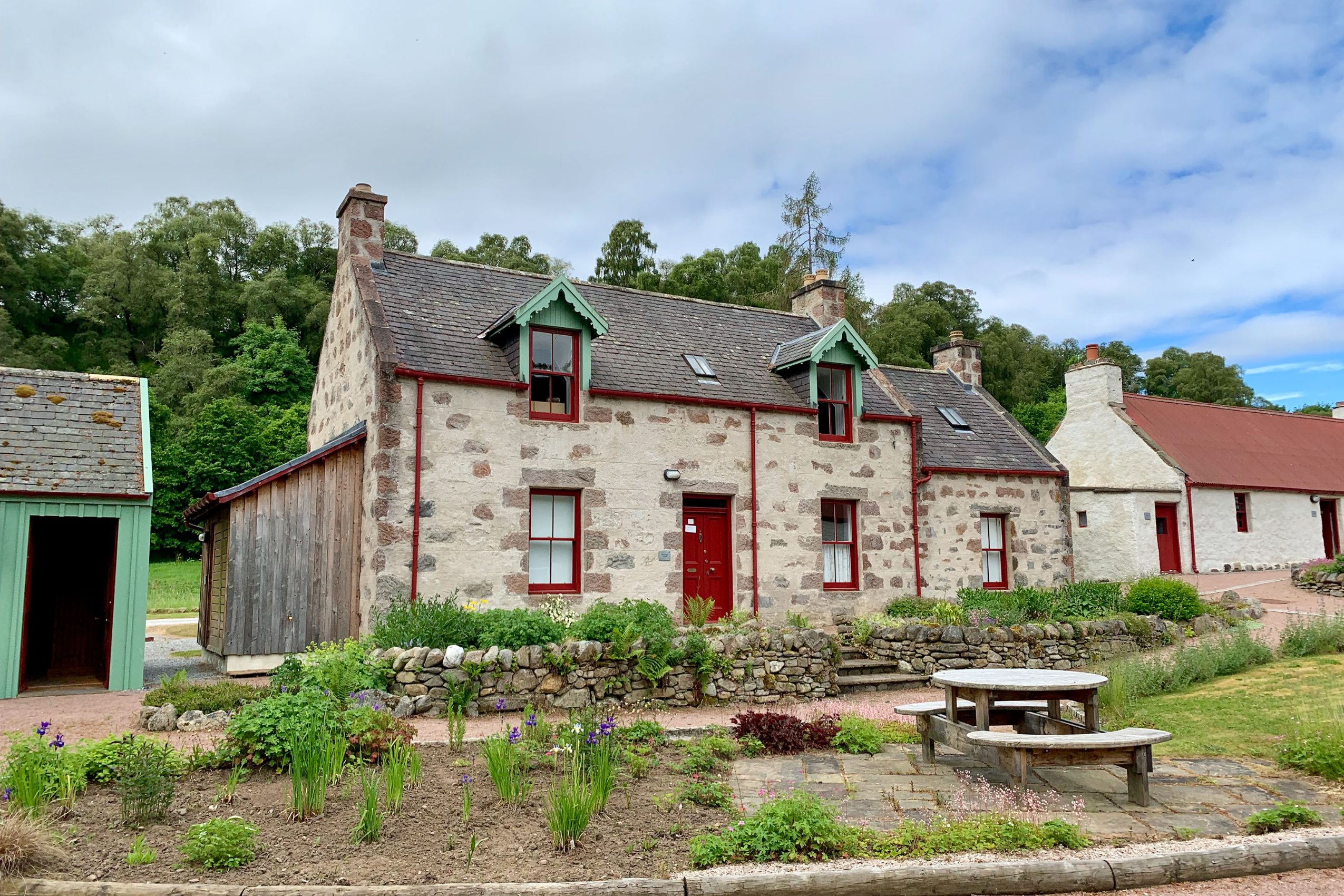The Woolmill House

JM Grant's watercolour of the Woolmill site in 1905.

Emma and James Smith, 1929
Pillars of the Community
When James and Emma moved into their newly-built Woolmill House in 1903, it was clear to everyone that they had "arrived".
Only two generations before, the family might have slept in the same building as their cattle. James' father, Alexander Smith, moved from Aberdeenshire to Knockando in 1863. He set about mechanising and improving the Mill over the next 40 years. James Smith and his wife Emma, took over the Mill in 1902. They converted the old byre cottage into a two-storey house with a maid's room and well-stocked vegetable garden. A summer house was built in the garden for the couple's adopted daughter who was suffering from TB.
The estate, which owned the croft, paid for the construction of the Woolmill House as an investment in their property. James had it fitted out as he now had the means to afford a few luxuries.
The Woolmill house in the 1920's ( Left - right, Duncan, maid, James, Emma and Harry)
Descendants of the Mill family occupied the Mill House until as late as 1992. This makes the house an important element of the history of the site, and key to its future development.
The Woolmill house photographed in 2006.
Prior to the restoration of the site, the house was found with many of its original features intact, and in relatively good condition. The interior decoration was in keeping with the requirements of the estate and reflected the social aspirations of the tenants. 
There were good basic fire surrounds in the bedrooms on the first floor. The living room fireplace has intricate beaded pilasters and beautiful ceramic tiles for the surround and hearth.
Joiner, Sandy Innes, who lived and worked in Knockando, constructed the grand staircase when the house was newly built. Leading up to the first floor, it features barley-twist balusters interspersed with the more usual decorative castings. Since the restoration his great grandson has visited the Mill to see his great grandfather's work. We believe the ironwork was carried out by James Stewart, the local blacksmith of the time, however we have no evidence of this.
A rare peek into the Woolmill house today shows the entrance of the restored Mill House with the stairs covered in our luxurious, hardwearing Strathspey Tweed.
The Woolmill House is now used as an office, design studio and staff room.



















